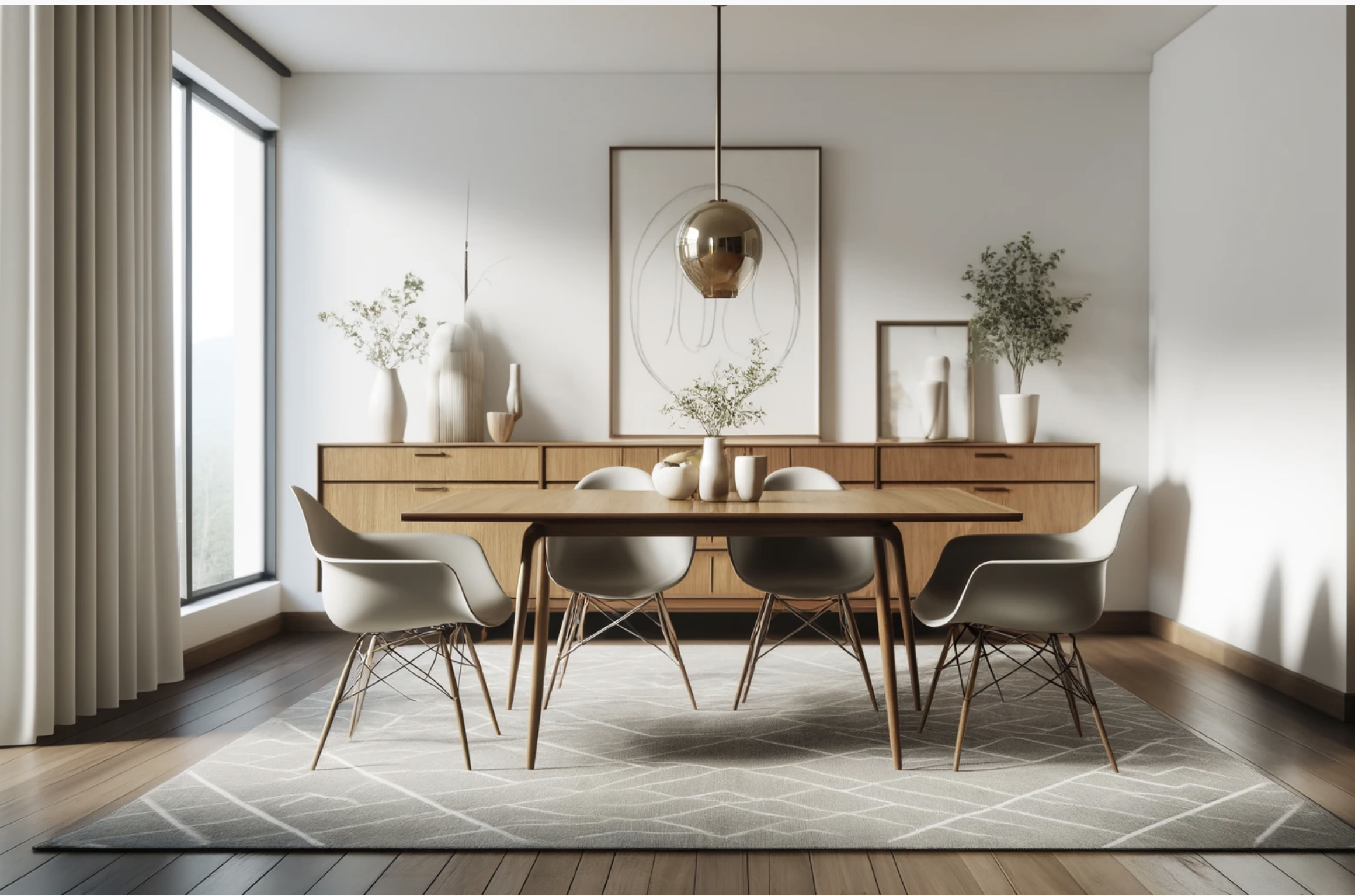Designing a mid-century dining room involves incorporating elements from the mid-20th century (roughly the 1940s-1960s) that emphasize simplicity, functionality, and organic forms. Here are some tips to help you achieve a mid-century modern dining room:
Furniture
Dining Table: Choose a table with clean lines, often made from wood like teak, walnut, or rosewood. Round or rectangular shapes with tapered legs are common.
Chairs: Select chairs with simple, ergonomic designs. Look for wooden frames with upholstered seats or molded plastic chairs. The iconic Eames chairs are a great example.
Sideboards and Buffets: Opt for low, long sideboards with sleek designs and minimal hardware. These pieces often have sliding doors and ample storage.
Here is an image featuring a set of Eames-style molded plastic chairs with wooden legs.
Materials
Wood: Use warm woods like teak, walnut, and oak for furniture pieces.
Metal: Incorporate metal accents, such as brass or chrome, for a modern touch.
Glass: Add glass elements in light fixtures or table tops for a sleek look.
Color Palette
Base Colors: Start with neutral bases like white, beige, or light grey for walls and larger furniture pieces.
Accents: Incorporate bold colors such as mustard yellow, burnt orange, olive green, or turquoise through accessories like cushions, rugs, and art pieces.
Patterns and Textiles
Geometric Patterns: Use geometric prints on rugs, cushions, or curtains. Patterns like starbursts, atomic designs, or simple stripes work well.
Natural Textiles: Choose natural fibers like wool, cotton, and leather for upholstery and accessories.
Lighting
Pendant Lights: Install statement pendant lights or chandeliers with clean lines and geometric shapes, often made of metal or glass.
Floor Lamps: Add floor lamps with thin profiles and interesting shapes to create ambiance.
Accessories
Art and Decor: Hang abstract or pop art pieces on the walls. Look for sculptures or ceramic vases with organic shapes.
Plants: Incorporate greenery with potted plants in simple, ceramic pots.
Layout and Space
Open Space: Keep the layout open and uncluttered. Mid-century design favors functional spaces with minimal distractions.
Flow: Ensure there's a good flow between furniture pieces, making the dining area accessible and inviting.
Tips
Mix and Match: Don’t be afraid to mix vintage pieces with modern replicas to create a cohesive look.
Functional Decor: Choose decor items that are not only aesthetically pleasing but also serve a purpose, such as stylish storage solutions.
By focusing on these elements, you can create a mid-century dining room that is both functional and stylish, evoking the timeless appeal of mid-20th-century design.
Here are two images of a mid-century modern dining room, incorporating the design tips provided. The space features a clean and functional aesthetic with characteristic mid-century elements.
**All the images I provided were generated by AI. If you need any further assistance or more specific designs, feel free to let me know, I can create or find the specific images you need! Shelley @ Adorn Design Group. 630.800.5720







